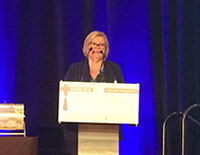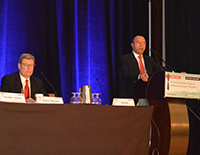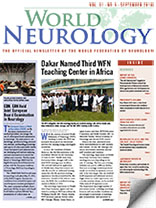By Wolfgang Grisold, MD

Toronto, Canada, was the backdrop for the 14th International Congress on Neuromuscular Disease in 2016.
The 14th International Congress on Neuromuscular Disease (ICNMD), which took place July 5-9, 2016, in Toronto, Canada, brought 750 delegates.
Vera Bril, MD, organized the Congress on behalf of the World Federation of Neurology (WFN) neuromuscular research group.
This ICNMD Congress covered the broad spectrum of neuromuscular diseases and aimed to fill the gap between new developments in research, in particular genetics and immunology, and patient assessment and care. The aim was to include the spectrum of neuromuscular diseases and focus on practical issues and emerging therapies.

Prof. Vera Bril, Toronto, president of the ICNMD Congress.
The plenary session topics focused on new genetic avenues in muscle disease, new treatment strategies in neuromuscular disease, treatment of inflammatory neuropathies, therapy in muscle disease, motor neuron disease, advances in myasthenia, and late-breaking news on the neuromuscular complications of Zika infections.
The scientific sessions were preceded by a rich selection of teaching courses, also with a wide variety of topics, such as motor neuron diseases, neuropathies, neuromuscular transmission disorders, and muscle diseases.

Prof. John England, MD, chair of the WFN neuromuscular research group, (left) and Dr. Nascimento, Brazil, at the special lecture on Zika.
In the afternoon, a choice of workshops allowed participants to discuss diseases and other issues in small groups in more detail. The poster sessions were a site of lively discussion, and many new projects and ideas appeared.
The meeting fulfilled several important tasks, such as:
- Giving a broad overview on the different types of neuromuscular disease
- Adding late news and scientific knowledge
- Having a wide educational and CME scope
- Being a site of discussion and networking where delegates felt welcome
For the next site of the ICNMD 2018, Vienna, Austria, was elected, with Wolfgang Grisold, MD, WFN secretary general, as the Congress president. Welcome to Vienna in 2018.
Review the 2016 ICNMD Abstracts
View the abstracts of the 2016 International Congress on Neuromuscular Disease Congress, which were published in the Journal of Neuromuscular Diseases (Volume 3, Supplement 1, pages S3-215).
